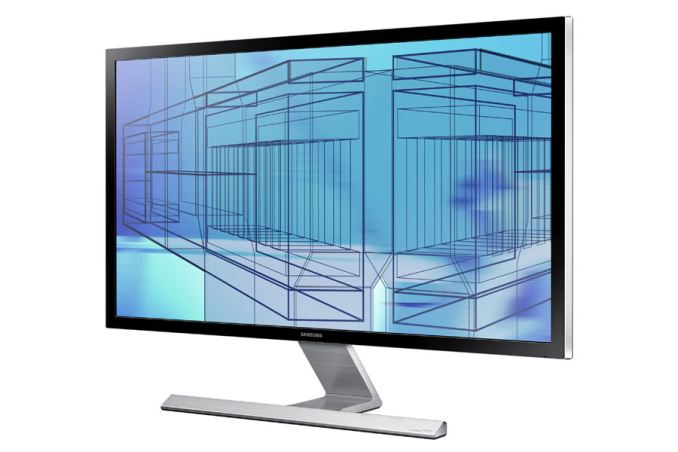AMD FreeSync Update
by Jarred Walton on March 5, 2015 12:30 PM EST
There are plenty of users looking for FreeSync displays, and for those of us in the US we will have to wait a bit longer. However, AMD sends word today that FreeSync displays are now available in select regions in EMEA (Europe, Middle East, and Africa). We're still awaiting final information on pricing and we've asked AMD for details on which monitors are shipping.
While we can't come to any real conclusions without true hands on experience with testing FreeSync displays across a variety of games, this should hopefully be a pretty straightforward piece of hardware. At this time I'd argue that the panel technology is just as important as the adaptive VSYNC, as having to go with a TN panel to get higher refresh rates tends to be a case of one step forward, one step back. Thankfully, there should be IPS FreeSync displays (alongside TN models) available.
Of course having a FreeSync display won't do you much good without an appropriate FreeSync enabled driver, and AMD announced that they will have a publicly available FreeSync driver posted on their website on March 19. There's a corollary that's just as important, however: a driver with support for CrossFire configurations won't be available until the following month. If you're running an AMD GPU and have been looking forward to adaptive refresh rates, the wait is nearly over.
Update: In the UK at least, OverclockersUK has several FreeSync models available. The BenQ XL2730Z at £498, the LG Flatron 34UM67 for £500 and the Acer Predator XG277HU for £430 are listed with the BenQ listed in stock.










55 Comments
View All Comments
CPUGPUGURU - Thursday, March 5, 2015 - link
Oxford Guy, I'm kinda in the same boat as you,Nvidia has a solution for you. Combine this mod with your $800 monitor and a high end Maxwell card and you'll be happy for years to come. Two GTX970/980 in SLI and DX12 which stacks memory would be what I would do, but I waiting for Max Maxwell to be unleashed before I take the plunge.
G-SYNC Do-It-Yourself Kit
http://international.download.nvidia.com/geforce-c...
Oxford Guy - Thursday, March 5, 2015 - link
"THIS MODIFICATION KIT IS ONLY COMPATIBLE WITH AN ASUS VG248QE MONITOR."CPUGPUGURU - Thursday, March 5, 2015 - link
Didn't know that, thanks Ox for the info, my gaming friend did a G-SYNC DIY mod and was happy with the result but you're right its only available on the VG248QE so its a nogo for me too, oh well I needed a bigger monitor anyways.Manch - Friday, March 6, 2015 - link
I read a while back that most current monitors can supt Free Sync as it's already in the VESA standard but just hasn't been implemented. Will any display manufacturers update via firmware? Hack maybe? If you're running consistently over 60fps does either of these tech do anything for me? I can see the benefit in a laptop where hitting 60FPS is spotty at best. Yall two seem to be read up on it so I figured I'd ask yall instead of the NVIDA/AMD cult members duking it out.mr_tawan - Friday, March 6, 2015 - link
I have never seen any monitor firmware updates before in my life... And I have never expect ones.But it would be nice if there are any though.
Oxford Guy - Monday, March 9, 2015 - link
Dell updated the firmware for the U2410 several times to correct pink tint issues and a broken user calibration mode.Yojimbo - Saturday, March 7, 2015 - link
From what I remember reading I don't think that's correct. Some sort of hardware modification needs to be performed to the scale chip for FreeSync to work in a stand-alone monitor. Maybe what you said is true for laptops.HollyDOL - Friday, March 6, 2015 - link
Wonder when/if we'll see video codecs with adaptive frame rates... I can imagine static scenes where it wouldn't be possible to notice 5FPS rate while on the other side you could get very dynamic scenes where high FPS makes much bigger impact...Urizane - Friday, March 6, 2015 - link
3GPP2 does this. Technically, MP4 (QuickTime derived) can do this to, but it's very uncommon.Urizane - Friday, March 6, 2015 - link
I should also mention that variable frame rates are a feature of the container, not the video codec. A video codec doesn't give a damn what the frame rate is unless buffer size and bitrate constraints are set. Even then, only the encoder cares while the decoder just plays frames when the container specifies it should. Also, 3GPP2 is basically an alternate implementation of the base format of MP4, which is why MP4 files could have VFR content. It's just not widely supported unless the extension happens to be 3G2 and the player understands the implications of that (VLC does, for example).